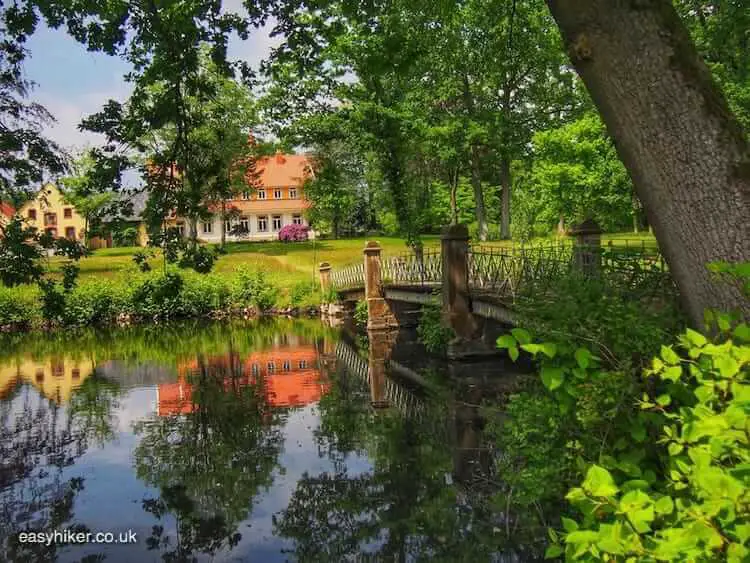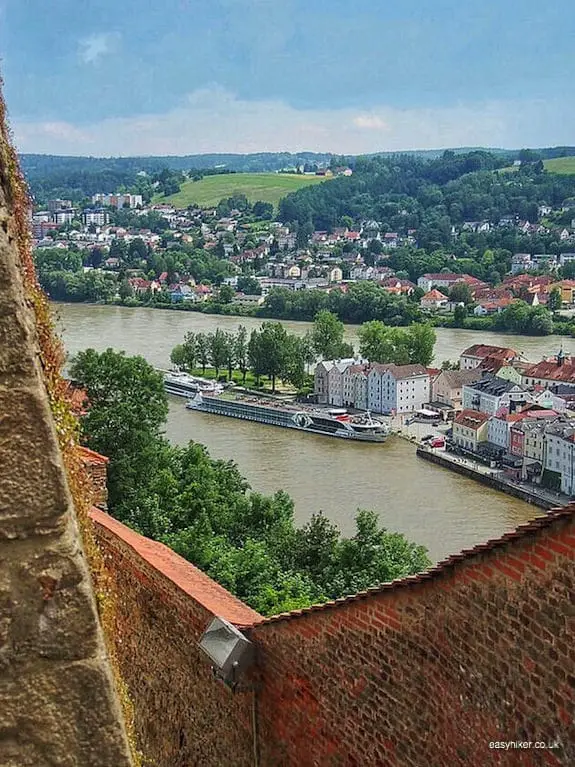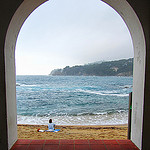Göttingen is no longer famous, but it should be. The story of this town in the heart of Germany is a metaphor as poignant as the tales of Easter Island or Dunwich, the mightiest medieval city on England’s east coast until it was flushed into the North Sea by a series of landslides and violent storms.

The catastrophe that struck Göttingen was of a different order. It is still a handsome town: its historic buildings were not washed away. On the contrary: what has survived Göttingen’s centuries-long history and the devastations of WWII has been lovingly restored.
The modern city can boast a dense array of handsome period houses from different stages of its history, …

… and not many places in Europe possess a late medieval residential building which has been as lovingly restored as the Schröderhaus on Weender Strasse in the town centre.

Even medieval pastiche has been included in the conservation effort: the city’s emblematic Gänseliesel Brunnen may, at first sight, give the impression that it was created at the same time as the 13th century City Hall in its back, but in fact, it only dates from 1901 – when it won a contest that had been purposefully designed to produce a “landmark that would last for centuries”.

To highlight and to contrast the historic urban fabric in interesting and often challenging ways, many modern artworks have been carefully placed around the town centre.

And to help locals as well as visitors to enjoy all of this, Göttingen’s city fathers have crisscrossed their town with attractive urban walkways.
You are invited to stroll down the Leine Canal, which was originally created in the 14th century to power the city’s flour mills …

… and to promenade on the 3-km-long Stadtwall trail that replaced the medieval city fortifications in 1762.
The footpath is lined with panels that provide you with an interesting introduction into the history of the town and the wall that surrounded it for centuries.

But the reason why Göttingen was once famous has little to do with any of that. The city’s fame rests entirely on its University, which was created in 1737 around what is now the courtyard of the massive University Library.

From the start, the Georg August University attracted the greatest minds of Germany. Carl-Friedrich Gauss, the most celebrated mathematician of the 19th century, was lured with the promise of a new astronomical observatory, although initially, while the Neue Sternwarte was under construction, he had to make do with the old one first.
This Old Observatory was located in the poorest part of town, an area whose inhabitants – people that today we would call squatters – had erected shacks that backed against the 13th century city fortifications so that their homes would have at least one stable wall.

Gauss then moved into a residence nearby – in the same slum quarter – so he could live near his place of work. That raised an eyebrow or two in the status-conscious provincial town.

From these humble beginnings, Göttingen moved up quickly in the world of academia. Under the leadership of David Hilbert, whose students included the chess champion Emanuel Lasker and the Game- Theory-pioneer John von Neumann, Göttingen’s Institute of Mathematics quickly became the most famous in the world.
In a conscious effort to build the world’s leading centre for theoretical and applied mathematics, the fields of engineering and theoretical physics also prospered, and in the 1920s, a new centre for the entire faculty was created at the edge of the old town on Bunsenstrasse.

It was in this new complex where Max Born went to work. Born was a great physicist (he won the Nobel Prize in 1954; footnote: he was also the grandfather of the 1970s pop star Olivia Newton-John, John Travolta’s love interest in the film version of the musical Grease), but perhaps an even greater coach and mentor.
The leading nuclear physicists of the post-WWI-period came to Göttingen to study under Max Born: Robert Oppenheimer, Enrico Fermi, Edward Teller, Wolfgang Pauli, Werner Heisenberg.
Further generous extensions were added in the late 1920s, after the US-based Rockefeller Foundation had chipped in to help out the genius-rich but cash-poor Germany of the Weimar Republic.

And then, the Nazis came to power. More than one in five tenured academics at the University of Göttingen lost their jobs when Jews and the “politically suspect” were weeded out, but no department was harder hit than the faculty of maths and physics.
In a famous episode, Bernhard Rust, Nazi Germany’s Minister for Education, found himself seated next to David Hilbert (who was not Jewish) at an official function. Rust asked Hilbert whether the Göttingen Department of Mathematics was “suffering” from the exodus of all these non-Aryan lecturers. “Suffering?” Hilbert replied. “The department is not suffering. It is dead.”
And despite serious efforts in the post-war period, it could not be restored to its ancient glory. Today, the Georg August University is a well-liked and cozy provincial academy, while world-shattering discoveries are made elsewhere.
The internationally famous University of the 1920s died from self-inflicted wounds, more Easter Island than Dunwich: the tragedy was entirely man-made.
Göttingen’s fame has gone. Only the buildings still exist, like the statues on Rapa Nui.







